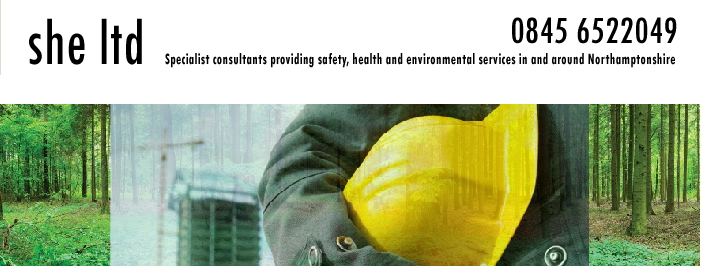Here is an example of a safety newsletters we send out to employees. We can send these direct. If you want to know more contact us at info@she.ltd.uk
Welcome to this month's safety newsletter. The idea of these newsletters is to raise safety awareness and to get you involved. This month’s topic is an introduction to risk assessment.
Background
A risk assessment is an important step in protecting workers and business, as well as complying with the law. It helps to focus on the risks that really matter in the workplace – the ones with the potential to cause real harm. In many instances, straightforward measures can readily control risks, for example ensuring spillages are cleaned up promptly so people do not slip, or cupboard drawers are kept closed to ensure people do not trip. For most, that means simple, cheap and effective measures to ensure the most valuable asset - your workforce - is protected.
What is risk assessment?
A risk assessment is simply a careful examination of what, in the workplace, could cause harm to people, so that business can weigh up whether they have taken enough precautions or should do more to prevent harm. Workers and others have a right to be protected from harm caused by a failure to take reasonable control measures. The law does not expect business to eliminate all risk, however they are required to protect people as far as ‘reasonably practicable’. "Reasonably practicable" means risk vs. cost; if a safety fix is going to cost pennies to prevent a fatal accident then it is reasonably practicable to implement it. If however a safety fix is going to cost millions to save a paper cut then this would not be reasonably practicable.
How to conduct an assessment
The Health and Safety Executive recommend a five step process:
1. Identify the hazards
2. Decide who might be harmed and how
3. Evaluate the risk and decide on precautions
4. Record the findings and implement them
5. Review and update where necessary
When thinking about conducting a risk assessment the following terms are useful:
a hazard is anything that may cause harm, such as chemicals, electricity, working from ladders, an open drawer etc; the risk is the chance, high or low, that somebody could be harmed by these and other hazards, together with an indication of how serious the harm could be.
We can all do risk assessments, and we often do so without even thinking about it. Risk assessment is about applying "common sense". It is knowing what to look for and how to deal with it.
Next month we will be looking into the mechanics of risk assessment, however if you want to know more now go to http://www.hse.gov.uk/risk/fivesteps.htm for information or go to http://www.she.ltd.uk/Risk%20Assessment/risk.html to try and spot some hazards.
Kevin Jones
www.she.ltd.uk
Your company has already got risk assessments - just ask



